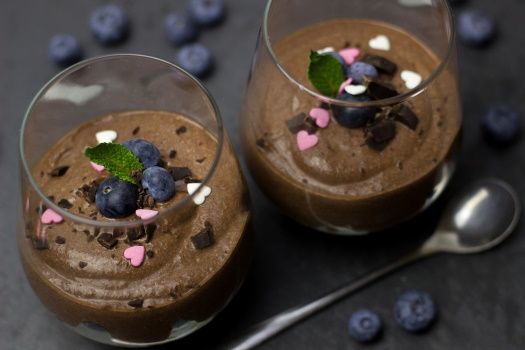Diet-related diseases due to high-fat foods on the rise

The prevalence of diet-related diseases, such as cardiovascular disease, type 2 diabetes mellitus and cancer, is on the increase throughout Germany. This not only has a personal impact on the people concerned but also leads to high costs for healthcare provision. Such conditions can be caused by the consumption of foods with a high energy content, including popular products such as cured meats, frozen pizzas, cream cheese and creamy desserts. Germany’s Federal Ministry of Food and Agriculture (BMEL) is therefore focusing on new strategies to counteract this trend and has called for innovations to reduce the amount of sugar, fat and salt in processed foods.
From a nutritional point of view, a reduction in fat content is a key way of lowering the energy content of foods. On the other hand, however, the presence of fat is what gives many foods a pleasantly creamy or smooth mouthfeel and is therefore a key factor in whether consumers enjoy and purchase them. By comparison, reduced-fat products often seem bland and watery. One way of reducing the fat content while preserving the enjoyment value of a foodstuff is to incorporate fat substitutes. At present, these are produced exclusively on the basis of animal materials. However, a rise in lactose intolerance, allergies and other intolerances to such proteins – plus the growing trend towards plant-based, environmentally aware, health-conscious nutrition – means that more and more consumers are rejecting these animal fat substitutes.
Developing reduced-fat foods on the basis of microparticulated proteins
Subjecting proteins to a process known as microparticulation is one way of reducing the fat content of foods. The first step is a thermomechanical treatment, which causes a radical reduction in size. This results in protein particles of a similar size to emulsified fat particles (0.1–10 µm). As such, they could be used to create a smooth and creamy mouthfeel in reduced-fat foods. Microparticulation can be achieved by a variety of methods – for example, by thermoplastic extrusion cooking, by protein treatment in a scraped surface heat exchanger, or by treatment in a combination of heat exchanger and high-pressure homogenizer. These methods subject the proteins to high temperatures and shear rates, causing them to unfold, aggregate and, ultimately, to shear, which can therefore greatly reduce their size.
Such processes are currently optimized for use with animal proteins such as whey protein. The chief hurdle to be overcome with microparticulation is to achieve a size of protein particle that will create an optimal texture when incorporated in foodstuffs – i.e., a smooth mouthfeel that consumers will not experience as sandy or grainy. Vegetable proteins consist of large, globular storage proteins with a much higher molecular weight than whey proteins. This necessitates a modification of the microparticulation process and, if necessary, a pretreatment of the vegetable proteins by means of methods such as enzymatic hydrolysis.
Vegetable proteins as a new kind of fat substitute
MIPRO is a joint project involving researchers from the Fraunhofer Institute for Process Engineering and Packaging IVV together with partners from industry. Its aim is to adapt microparticulation for use with vegetable protein products made of lupines or peas.
The microparticles obtained in this way should have a creamy to semi-solid consistency – depending on the actual microparticulation process used – and are to be incorporated as fat substitutes in full-fat and reduced-fat foods. The microparticles can be added to foods either directly after microparticulation or in a powdered form following intermediate drying, which increases shelf life and reduces off-flavors.
The next step is to conduct trial applications with standard products such as desserts, dressings, sauces etc. and to investigate and optimize the influence of the fat substitute on the sensory properties – mouthfeel, odor and taste – of such reduced-fat foods. To analyze and evaluate the creaminess and fat properties of the new products, MIPRO researchers will call on the expertise of Fraunhofer IVV’s very own panel of sensory specialists and also employ a range of tribological methods. Ultimately, it should prove possible to map the relationship between protein structure and a product’s end properties.
Project term: |
2020 to 2023 |
Project management / project funding: |
Federal Ministry of Food and Agriculture BMEL, |
 Fraunhofer Institute for Process Engineering and Packaging IVV
Fraunhofer Institute for Process Engineering and Packaging IVV